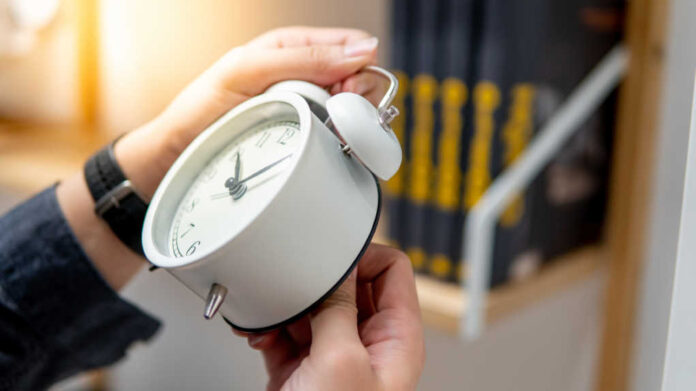
On the second Sunday in March, most of the United States (not Hawaii and some parts of Arizona) “springs forward” an hour as Daylight Saving Time begins.
One hour may not seem like a lot, but the change can significantly affect your body and its rhythms.
Three Imperfectly Synchronized Clocks
To better understand the relationship between Daylight Savings Time and our health, it will be helpful to distinguish between three different time-frame systems that are not quite perfectly in sync with each other:
Sun Clock
The sun clock is the locally visible progression of the sun across the sky from sunrise to sunset. Due to the earth’s tilt on its north-south axis, different parts of the world are exposed to more or fewer hours of sunlight on any given day. And as the earth goes around its yearly rotation of the sun, the number of daylight hours gradually changes, creating the seasons.
Social Clock
The standardized time-keeping system that we all now rely on emerged in the 19th century to regulate train schedules and facilitate commerce. This is the time we see on our clocks, smartphones, and computer screens, and it governs when we go to work, coordinate with others, and attend events.
To keep it more closely in line with seasonal sun exposure (and conserve fuel and reduce electric energy usage), Daylight Savings Time was established by many countries around World War 1.
Body Clock
Many biological processes, such as sleep and wakefulness, digestion, and metabolism, follow a roughly 24-hour cycle. This circadian rhythm is predominantly set by exposure to light and darkness, so each individual’s body clock can be slightly different.
What Happens When We Shift The Social Clock?
When we “spring forward” and “fall back” during the Daylight Savings transition, we adjust our daily schedules by one hour when we wake up, go to work, and so on.
But our body clock doesn’t shift so easily. The mismatch between our social clock and our body clock can lead to all sorts of problems.
The week after the springtime Daylight Savings change, there is a significant increase in car accidents and emergency room visits, probably resulting from disrupted sleep patterns.
There is also an increase in heart attacks, strokes, and depression, as well as a noticeable increase in total daily mortality.
Tips For Adjusting To Daylight Savings
The problems that can occur during the Daylight Savings Time change are closely associated with disrupted sleep, linked to the change in light and darkness exposure.
To help minimize the impact of Daylight Savings on your body, here are a few tips:
Gradually adjust your sleep schedule in the days leading up to the time change.
Gradually adjust your eating times too.
Change your clocks earlier in the evening rather than the day after.
Go outside and enjoy the sunlight in the following days.
When it’s time to prepare for sleep, make sure your bedroom is dark. Turn off lights and screens in the time leading up to bedtime.






















